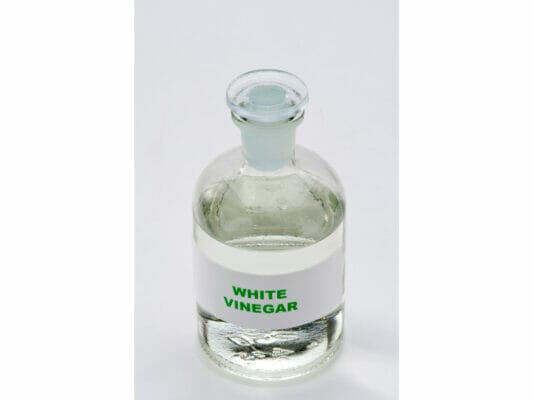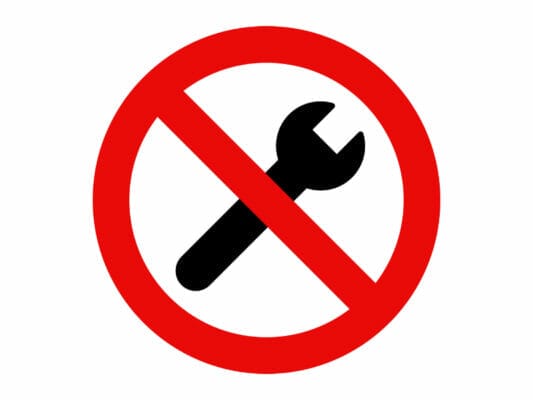Disclaimer: This post may contain affiliate links, meaning we get a small commission if you make a purchase through our links, at no cost to you. For more information, please visit our Disclaimer Page.
Nobody likes a leaky or stuck shower head. However, there is a simple solution to your problem.
Depending on the brand and design of your shower head, firmly hold either the showerhead or the connecting nut and unscrew it by turning it counterclockwise to remove it. If you need extra leverage, turn it while holding the shower pipe in your other hand, taking care not to bend or move it.

Table of Contents
How do you get a stuck shower head off?
The design of showerheads should allow you to easily fit and remove them when the need arises by screwing them on and off. However, removing a showerhead when needed is not always easy, as they can get stuck owing to mineral accumulation, calcification, or rust.
The good news is that you won’t be needing many pieces of equipment for the job, as it is a relatively straightforward process.
Preparing to Remove a Showerhead
Place a waste bag or tarp in the bathtub beneath the showerhead before beginning the process. Such will serve to collect any falling rust and metal shavings.
Then turn off the water supply to your shower. While this isn’t technically necessary during showerhead removal, it is preferable to take caution if you’re not well-versed with plumbing.
Use a Wrench or Pliers
Begin by manually removing your showerhead using your hand. If this doesn’t work, there are a few other options for you to consider. When you use pliers or a wrench, you’ll be able to grip the showerhead connector more tightly than when you use your hand.
These tools usually have a handle that gives you the leverage you didn’t have previously when purely using your hand.
First, tape the teeth of your pliers or wrench or pliers with plumber’s tape. It will prevent them from scratching or digging into the showerhead.
Even if you wish to dispose of the old showerhead, the plumber’s tape will keep the wrench from scratching off metal shavings or rust, which could cause a mess in your bathroom.
To unscrew, tighten the wrench or pliers around the connection and turn it counterclockwise. Once you manage to get the showerhead moving, unscrew it entirely by hand.
Clean the Shower Pipe
Clean the pipe threads after removing the stuck showerhead to prevent your new showerhead from becoming stuck again. Remove any plumber’s tape from the pipe threads and scrub the threads thoroughly with an abrasive like steel wool to get into the grooves.
You could use vinegar to make the last wash to ascertain that the pipe is clean before installing the new showerhead.
To prevent water from seeping into the gaps, wrap a piece of plumber’s tape over the pipe threads and attach the replacement showerhead according to the manufacturer’s directions.
If you switched off the water supply before starting the process, switch it back on and ensure that the shower connection is not leaking.

How to remove a stuck shower head?
If you couldn’t get the showerhead off the pipe with a wrench or pliers, it could be because of corrosion, rust, calcification, or some other mineral and scale build-up.
Fortunately, you can get rid of many of these substances by dissolving them in a vinegar bath. White vinegar is a handy household cleaner that is very acidic and will eat away at the build-up or rust.
If your shower head is connected to the wall, fill a plastic bag with the white vinegar and place it over the stuck connector on a showerhead. If you have a hanging showerhead, place it in a bowl or bucket to remove it.
Allow the vinegar bath to eat away at the rust for a while. You could even leave it overnight.
After it has soaked, use a wrench or pliers to twist the showerhead off. If the connector still doesn’t come out, try spraying it with an appropriate lubricant. Always prevent contact with skin and eyes when working with such chemicals.
You could also remove rust, lime, and calcium from the showerhead with a rust, calcium, and lime remover. Chemical treatment of mineral build-up and rust may cause the connector to loosen. Make sure to read the directions on the rust, calcium, and lime remover container.
Follow the manufacturer’s instructions when using the product. Allow the remover to rest for the specified amount of time, then scrub it off with a wire brush to remove any remainder. Wipe the showerhead and the shower arm, then try removing the showerhead.
What tool is best to remove a showerhead?
To loosen a stuck shower head, you can always use simple equipment, such as wrenches or pliers. When one method fails, try the next. When using a wrench or pliers, protect the metal by covering the fixture’s plumbing nut or connector with an old towel before grasping it.
To break the rust and mineral deposits, spin the wrench or pliers clockwise, then turn it counterclockwise to make the showerhead loose and then remove it.
While not technically a wrench, the adjustable slip-lock pliers will perform the job, but they have sharp grippers that could easily harm the showerhead’s finish. If the showerhead is stuck due to corrosion or mineral deposits, you may wish to consider other options.
Your best option is the strap wrench when you need a wrench to turn a pipe without breaking it. It is a lockable strap with a handle. The best part is that it is pretty efficient yet again very affordable.
Wrap the strap around your showerhead and then draw it through the ratcheting lock to tighten
it. Rubber straps are typical on strap wrenches. They prevent them from slipping while in operation.
If yours doesn’t have rubber straps, wrap a rubber glove around the showerhead before attaching the strap to your showerhead. Once the strap wrench is in place, crank the head counterclockwise using much force as is needed on the handle. Even if the shower is badly stuck, this approach should work.

How to remove a stuck shower head without tools
Most showerheads are meant to be hand-tightened, and you can tighten with your hand; you can typically loosen with your hand as well.
However, if a more muscular person installed the showerhead than you, you may need tool assistance to remove it.
There are various showerhead removal methods when using your hand. Manufacturers recommend that manufacturers grasp the showerhead with one or both hands and turn it counterclockwise with adequate force.
Continue exerting as much force on the showerhead as is necessary, and even if it does not turn, the shower arm may get loose and unscrew from the wall.
It is entirely okay; it will not cause water to leak, and it will allow you to separate the showerhead and shower arm from your workshop or another more appropriate place. The showerhead has a smooth glossy finish.
If you keep slipping off your grip, you may want to wrap a towel around the showerhead and try turning it again. If this still doesn’t give you enough grip, put on a pair of rubber gloves. Eventually, there’s a great chance of it budging and getting loose.
If these methods don’t work and you don’t have access to a strap wrench or pliers, try dissolving the scale or rust preventing the showerhead from turning. Scale and rust are different substances, and dissolving them requires you to get separate chemicals, although neither is difficult to obtain or expensive for that matter.
You can also use WD-40 or a comparable spray lubricant to spray into the showerhead connector. Allow it to stay for about 10 minutes before having another try at unscrewing the showerhead.
Conclusion
Remember that to loosen the showerhead, you must spin it counterclockwise. So make sure you’re tapping in the appropriate direction. A few good taps should be able to loosen the showerhead, allowing you to complete unscrewing and detaching it by hand.
